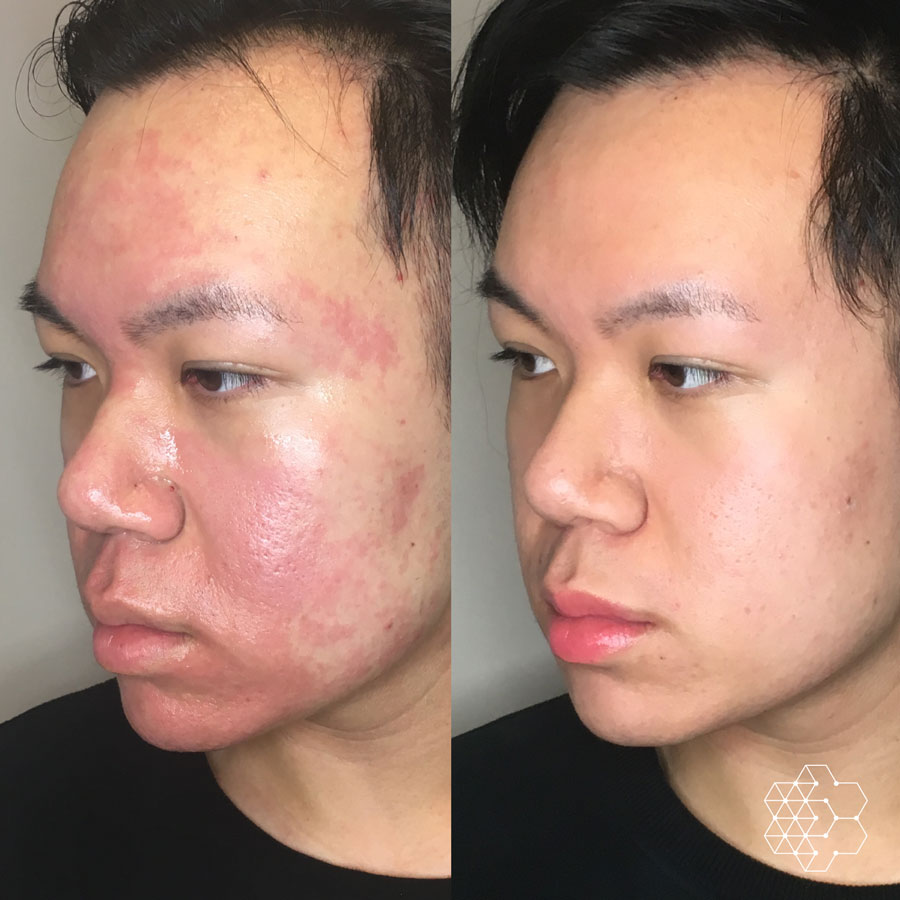Ingenious Acne and Acne Scars Treatment: Solutions for every single Skin Type
Ingenious Acne and Acne Scars Treatment: Solutions for every single Skin Type
Blog Article
Discovering Skin Problem: Determining and Dealing With Acne Scars for Healthier Skin
Acne marks stand for a significant issue for individuals seeking to keep healthy and balanced skin, as they can affect both look and self-esteem. Understanding the various kinds of scars, from atrophic to hypertrophic, is important for identifying proper treatment alternatives.
Comprehending Acne Marks
Recognizing acne marks is critical for any individual that has actually experienced serious acne, as these marks can have a long-term effect on both physical appearance and emotional well-being. Acne marks create when the skin undergoes inflammatory feedbacks throughout active acne sores. The seriousness of scarring is frequently affected by variables such as the kind of acne, its period, and private skin qualities.
The body's natural healing process can lead to either atrophic scars, which appear as depressions in the skin, or hypertrophic marks, which are raised and result from overproduction of collagen. Furthermore, the mental toll of acne marks must not be taken too lightly; several people report feelings of humiliation, anxiousness, and decreased self-confidence. This emotional concern can influence social interactions and total lifestyle.
Addressing acne scars needs a detailed understanding of their development and impact. Awareness of the possibility for long-lasting repercussions connected with neglected marks can encourage individuals to look for ideal treatments. Early treatment and efficient management strategies can considerably enhance skin look and boost emotional strength, emphasizing the importance of recognizing the complexities surrounding acne scars.
Kinds Of Acne Scars
Acne scars can be categorized right into distinctive kinds, each showing one-of-a-kind features and requiring details treatment techniques. The key kinds of acne marks include atrophic, hypertrophic, and keloid marks.

Hypertrophic marks, in contrast, are increased over the skin degree and are the outcome of extreme collagen manufacturing throughout the recovery procedure. They commonly stay within the boundaries of the initial acne sore. Keloid marks are similar yet prolong beyond the initial injury website, forming bigger, elevated areas that can be scratchy or agonizing.
Comprehending these kinds of marks is essential for choosing suitable therapy alternatives. Different scars might respond far better to particular therapies, such as laser therapies, fillers, or medical treatments, highlighting the importance of a customized strategy to acne scar monitoring.
Identifying Your Scars
When evaluating the look of your skin, it is important to precisely determine the sort of marks present, as this will certainly notify one of the most efficient therapy approach. Acne marks normally come under 2 categories: hypertrophic and atrophic marks. Atrophic scars, which are the most usual, look like anxieties or imprints on the skin. These can even more be identified into ice-pick scars, boxcar scars, and rolling scars, each showing unique characteristics and needing different approaches for evaluation.
Hypertrophic scars, on the other hand, are raised and happen as a result of extreme collagen manufacturing throughout the healing procedure. Acknowledging the particular features of your scars-- such as depth, width, and texture-- is important for appropriate recognition. Furthermore, take into consideration the circulation of marks throughout your skin, as this can suggest the extent and period of the acne condition.
Involving with a skin doctor can offer useful insights into the nature of your scars, assisting in the distinction in between various types. An extensive understanding of your scars will eventually bring about a more tailored and reliable therapy plan, ensuring a more clear and healthier complexion.
Therapy Choices Readily Available
Recognizing the visit the site certain sort of acne marks existing on your skin prepares for discovering effective therapy options. Usual kinds of acne scars consist of atrophic (clinically depressed), hypertrophic (raised), and post-inflammatory erythema.
For atrophic marks, options such as chemical peels, microneedling, and laser resurfacing blog here are commonly made use of. Chemical peels off make use of acids to get rid of the external layer of skin, advertising brand-new cell development.
Hypertrophic marks can be treated with corticosteroid shots to squash the mark or laser treatment to lower inflammation and enhance appearance. acne scars treatment. Silicone gel sheets and pressure dressings might likewise aid in handling raised marks
Additionally, dermal fillers can temporarily load in clinical depressions from atrophic scars, while surgical excision may be suitable for extreme situations. Each therapy choice has its benefits and factors to consider, making it vital to speak with a skin specialist. They can offer customized recommendations based upon the type and seriousness of your marks, along with your skin type and general health and wellness.
Tips for Avoidance
Reliable avoidance techniques can substantially decrease the likelihood of establishing acne marks. Using non-comedogenic products aids prevent stopped up pores, which can worsen acne.
Staying clear of need to stand out or choose acne sores is critical, as this can lead to deeper skin damages and boost the threat of scarring. Instead, take into consideration making use of a cool compress or over the counter treatments to minimize swelling and soreness.
Sunlight protection is an additional important element of prevention; ultraviolet (UV) rays can dim scars and hinder the recovery procedure. Applying a broad-spectrum sunscreen with at least SPF 30 daily can shield the skin and promote even useful reference healing.
Last but not least, keeping a well balanced diet rich in anti-oxidants, minerals, and vitamins supports skin wellness and recovery. Staying hydrated and handling stress and anxiety levels can likewise play a significant role in decreasing acne flare-ups. By carrying out these techniques, people can considerably decrease their possibilities of developing acne scars.

Final Thought
In conclusion, understanding and determining acne scars is vital for reliable therapy and attaining healthier skin. Different kinds of acne marks, consisting of hypertrophic and atrophic scars, demand details treatments customized to specific demands.
The body's natural healing process can result in either atrophic marks, which appear as clinical depressions in the skin, or hypertrophic scars, which are raised and result from overflow of collagen. They are further split into three subtypes: ice pick marks, boxcar marks, and rolling marks. Acne marks typically drop into two groups: hypertrophic and atrophic scars. These can further be identified into ice-pick scars, boxcar marks, and rolling scars, each showing distinct features and requiring various methods for analysis.
Different types of acne marks, including hypertrophic and atrophic scars, necessitate certain treatments customized to individual demands.
Report this page